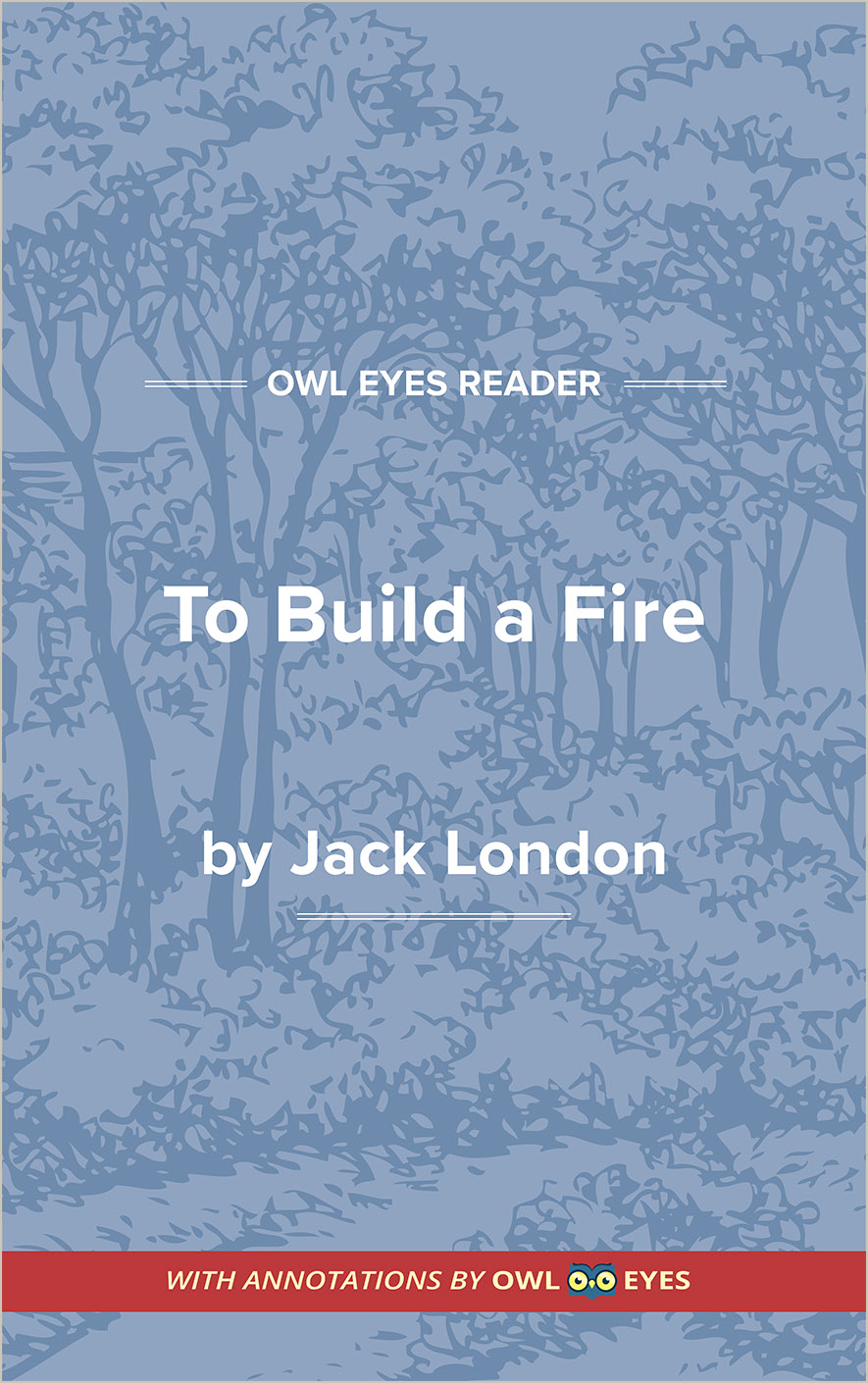Analysis Pages
Literary Devices in To Build a Fire
Repetition: There are several notable instances of repetition throughout “To Build a Fire.” The man is constantly thawing and refreezing various parts of his body, showing the futility of his efforts to remain warm. Three times he attempts to build a fire, each attempt more desperate and less successful than the last, emphasizing the increasing mortal danger of his situation. The man’s tobacco chewing, which he prioritizes over more important matters, occurs several times when the man is underestimating the environment’s hazards. Finally, the man’s notion of “cold” is constantly being redefined—the longer he spends in the wilderness, the more frequently he has to reconsider his previous evaluation of the temperature.
Imagery: London’s portrayals of the Yukon landscape are beautiful and evocative, but often emphasize the man’s smallness in relation to the vast swaths of snow and ice surrounding him. Furthermore, other sensory descriptions—such as the visual and sound of the man’s spit cracking on the snow—are meant to show nature’s inhospitality.
Foreshadowing: Foreshadowing throughout the story contributes to the reader’s sense that the outcome—the man’s freezing to death—is inevitable. The man’s inexperience, shown through lines such as “Fifty degrees below zero was to him just precisely fifty degrees below zero,” hint to the reader that the man’s lack of concern will be problematic for him. The old-timer’s advice, which the man recalls several times, also foreshadows the man’s missteps. Despite the old-timer’s warnings, for example, the man takes off running with wet feet—the last in a series of poor choices that leads to his death.
Literary Devices Examples in To Build a Fire:
To Build a Fire
🔒"where were the other food-providers and fire-providers...." See in text (To Build a Fire)
"he wondered if Mercury felt as he felt when skimming over the earth...." See in text (To Build a Fire)
"fetched forth the birch bark...." See in text (To Build a Fire)
"Once in a while, the thought reiterated itself that it was very cold and that he had never experienced such cold...." See in text (To Build a Fire)
"a dog, a big native husky,..." See in text (To Build a Fire)
"COLD and grey, exceedingly cold and grey..." See in text (To Build a Fire)
"the man..." See in text (To Build a Fire)

